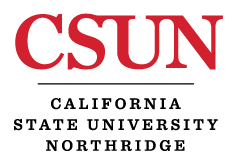Program: B.S., Physics
Physics
Overview
The B.S. program in Physics is designed for students who desire to (1) pursue a career in physics-related research and development either in industry or government or (2) prepare for graduate work in physics or related subjects. The B.S. program in Physics has two options: Option I—Physics, and Option II—Astrophysics.
Option I is a balanced program in experimental and theoretical physics. This option can be specialized toward applications in engineering or a more mathematical approach to theoretical physics. This is accomplished by the appropriate choice of the elective courses via consultation with the department undergraduate advisor.
Program Requirements
To enroll in the first courses in Mathematics and Chemistry, students must obtain a satisfactory score on the Mathematics Placement Test (MPT) and the Chemistry Placement Test (CPT). Without satisfactory scores, students may be required to take additional courses in preparation for the required courses. The student must complete all courses listed under Lower Division required courses as well as those listed under one of the two options. In addition, all students are required to take two comprehensive exams—one on general physics upon completion of PHYS 227 or its equivalent and one on advanced physics just before graduation. The dates of these exams will be posted in the department office. For more information, consult the department undergraduate advisor.
1. Lower Division Required Courses (36 units)
CHEM 101/L General Chemistry I and Lab (4/1)
MATH 150A Calculus I (5)
MATH 150B Calculus II (5)
MATH 250 Calculus III (3)
MATH 280 Applied Differential Equations (3)
PHYS 225/220AL Physics I and Mechanics Lab (4/1)
PHYS 226/220BL Physics II and Electricity and Magnetism Lab (4/1)
PHYS 227/L Physics III and Lab (4/1)
2. Upper Division Required Courses (34 units)
PHYS 301 Analytical Mechanics I (3)
PHYS 311 Electromagnetism I (3)
PHYS 365 Experimental Physics I (2)
PHYS 366 Experimental Physics II (2)
PHYS 375 Quantum Physics I (3)
PHYS 389 Mathematical Methods in Physics I (3)
PHYS 402 Analytical Mechanics II (3)
PHYS 410 Electromagnetism II (3)
PHYS 431 Thermodynamics and Statistical Mechanics (4)
PHYS 451 Quantum Physics II (3)
PHYS 465 Experimental Physics III (2)
PHYS 466 Experimental Physics IV (2)
PHYS 493 Physics and Astronomy Colloquium (1)
3. Upper Division Electives (9 units)
A minimum of 9 units of Upper Division electives chosen with the approval of the department undergraduate advisor from the following or other courses, including Mathematics or Engineering, if approved by the department undergraduate advisor:
ASTR 301 The Dynamical Universe (3)
ASTR 401 The Radiative Universe (3)
PHYS 420 Modern Optics (3)
PHYS 421 Laser Physics (3)
PHYS 470 Introduction to Nuclear and Elementary Particle Physics (3)
PHYS 480 Introduction to Solid State Physics (3)
PHYS 489 Mathematical Methods in Physics II (3)
PHYS 490 Computer Applications in Physics (3)
4. General Education (48 units)
Undergraduate students must complete 48 units of General Education as described in this Catalog.
Basic Skills Mathematics is satisfied by MATH 150A. Natural Sciences is satisfied by CHEM 101/L and PHYS 225/220AL. Physics majors also may satisfy Lifelong Learning by completing COMP 106/L or COMP 110/L.
Total Units in the Major/Option: 79
General Education Units: 36
Additional Units: 5
Total Units Required for the B.S. Degree: 120
Contact
Chair: Say-Peng Lim
Live Oak Hall (LO) 1128
(818) 677-2775
www.csun.edu/physics
Student Learning Outcomes
- Demonstrate knowledge of physical principles used to model natural phenomena.
- Demonstrate ability to convey physical concepts with mathematical expressions, and effectively derive quantitative predictions from a model through mathematical analysis.
- Demonstrate understanding of scientific methodology including:
a. data collection from observations, setting up laboratory experiments, and data collection from experiments.
b. analysis of data.
c. testing of a model or hypothesis by comparing with data. - Demonstrate competency in using computer tools including:
a. use of software programs for data analysis and presentation.
b. numerical analysis.
c. computer simulations. - Demonstrate special knowledge of their subprogram.
- Communicate clearly and articulately about physical concepts, findings, and interpretations in oral presentations.
- Acquire ability to write clear, organized, and illustrated technical reports, with proper references to previous work in the area.




